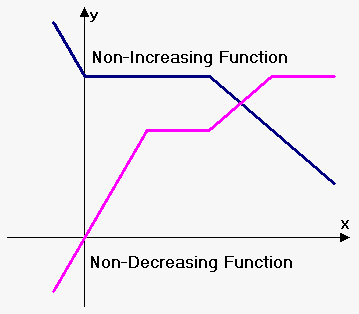Given an array with
n integers, your task is to check if it could become non-decreasing by modifying at most 1 element.We define an array is non-decreasing if array[i] <= array[i + 1] holds for every i (1 <= i < n).Example 1:
Input: [4,2,3]
Output: True
Explanation: You could modify the first 4 to 1 to get a non-decreasing array.
Example 2:
Input: [4,2,1] Output: False Explanation: You can't get a non-decreasing array by modify at most one element.Note: The
n belongs to [1, 10,000].Source:LeetCode
At first glance, it looks like an easy and straightforward problem, but believe me it's greedy problem. In the problem, you are allowed to make atmost "one" modification to make a non-decreasing array. Nondecreasing means that every element is greater than or equal to the one before it e.g. [1,3,4,4,5,6,9]. For example, [2,2,3,2,4] can this become non-decreasing? Yes, by replacing 3 with 2 =>[2,2,2,2,4].
What about this: [1,1,1,1,2,1,1]?
Yes, replace "2" with "1" gives [1,1,1,1,1,1,1]
Algorithm
So when nums[i]>nums[i+1] for i>0 ( since we can modify first element to any smallest value to make the sequence non-decreasing we don't need to make any changes, we do increment count (cnt)) if the value before i'th element nums[i-1] is lesser or equals to nums[i+1] we assign nums[i] to nums[i-1] to balance the sequence.
For example,
arr1 = [1,1,1,1,2,1,1] => arr1 = [1,1,1,1,1,1,1]
2>1 and 1<=1. "1" is a correct possible modification
arr2 =[-1,4,2,3] => arr2 =[-1,-1,2,3]
4>2 and -1<=2. "-1" is a correct possible modification
In all other cases, such as [3,4,2,3] 4>2 but 3 is not less than or equal to 2 so the appropriate change here is to replace "3" with a larger value "4" that gives [3,4,4,3] still 4>3 so this array is not non-decreasing array. For simplicity, I choose to modify the value of element with previous element so I don't have to pick any value that will make the array non-decreasing. At last, if count remains less than or equal to one means we have only done one or no modification in the array and return the result.
Java Solution:
public boolean checkPossibility(int[] nums) { int l = nums.length, cnt = 0; for (int i = 0; i < l - 1 && cnt <= 1; ++i) { if (nums[i] > nums[i + 1]) { // e.g. [2,2,3,2,4] 3>2 if (i > 0) { if (nums[i - 1] <= nums[i + 1]) // if number is lesser or equal modify nums[i] nums[i] = nums[i - 1]; // to the previous number. 2<=2 modify nums[i] =2 else // in all other cases modify the next number nums[i + 1] = nums[i]; // to the current number to match// the sequence } ++cnt; } } return cnt <= 1; }

Thanks a lot, superb solution.
ReplyDeletethank you
ReplyDeleteGreat solution Thank you
ReplyDelete